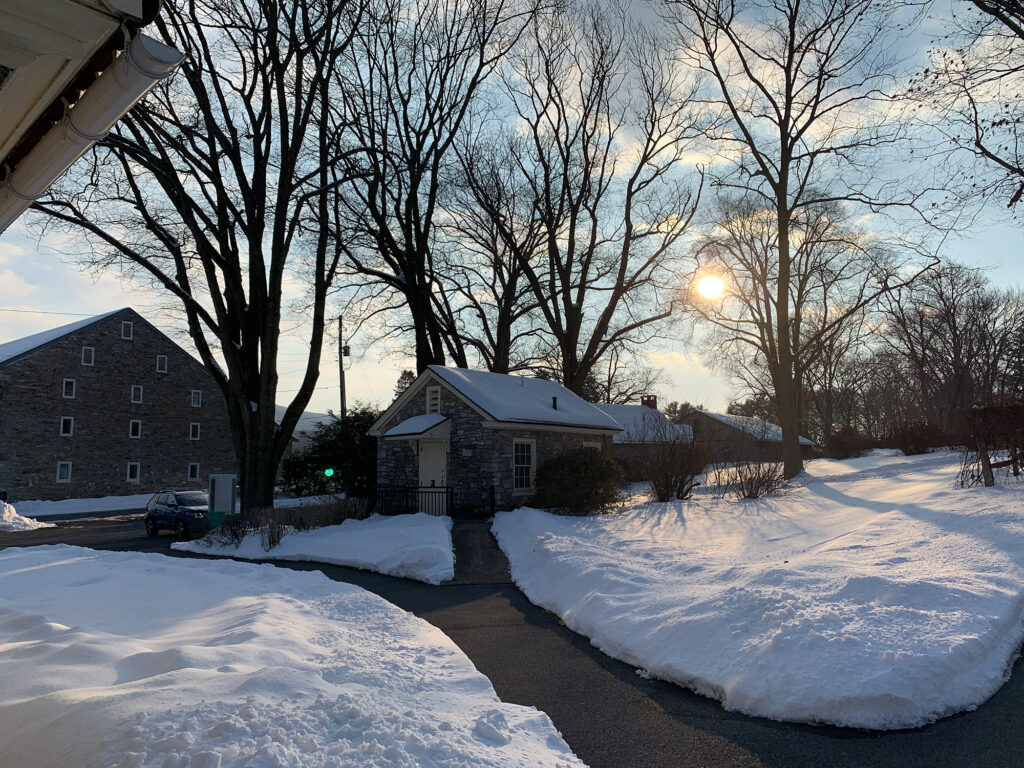
Date of Last Visit: February 20, 2021
Conrad Weiser is a name that is largely ignored in modern textbooks. But in western Berks County, where Weiser lived for much of his life, Weiser remains a household name, if only because of the school district that bears his name.
Just outside the small town of Womelsdorf, the Conrad Weiser Homestead offers a look at the man who played a critical role in Colonial Pennsylvania.

The 26 acre property that was onced owned by Conrad Weiser and his family is owned by the Pennsylvania Historical & Museum Commission.The grounds are popular for picnics, weddings and other events throughout the year, including Living History Sundays where costumed interpreters showcase what life was like before the Revolution.
Weiser was a key figure in Colonial Pennsylvania. He is primarily remembered – by those who remember him – as an official interpreter for the colony in communication with Native American tribes. When Weiser was still a boy, his family emigrated from Germany to New York in the early 18th Century. Young Weiser was a handful, especially in the eyes of his stepmother. Eventually, his father sent him to live with the local Iroquois tribe where he learned the culture and the language.
Because of his unique communication skills, Weiser was a natural choice to serve as a liaison between the Colonial government and Native tribes. The fact that Weiser was German and had no particular loyalty to the British made him well-respected among Native leaders, including Shekilammy.

On the grounds of the Homestead is a statue dedicated to the chief, who became a close friend of Weiser’s during their lives.
What’s now the Homestead is only a small portion of the acreage that Weiser owned in his lifetime. (His will bequeathed more than 4,000 acres to Berks County upon his death). Part of his holdings was a store in the City of Reading – about 20 minutes to the east – where he presided in court as the first president judge of the county.

While the storefront is long gone, the stone home of Weiser and his family is still standing at the Homestead 300 years later. But don’t be confused, Weiser’s house is not the large stone farmhouse that now serves as the welcome center and offices for the park. That was built by subsequent owners of the property.

Instead, Weiser and his family lived in the much more modest building in front – at least that is the accepted theory. It is the only building on the property that could have been from Weiser’s lifetime (and only half of it, at that, would have been original).
Regardless of whether this was Weiser’s primary residence or a secondary building, the home is decorated as if Weiser were still living there with a straw-filled bed and period furniture.

Just a short walk from his home is the final resting place of Conrad Weiser and his wife, Anna, as well as several children who died before adulthood.
The graves lie in the shadow of a monument erected in his honor. Originally located in front of the Womelsdorf High School, it was moved to the site in 1926. The obelisk features images of importance to both the Colonial settlers and Native Americans whom Weiser served.

The rest of the park is a great open space that is frequently used for picnics and walks. Elders from the area will still talk about going ice skating on the pond in the park when they were kids.
The park grounds are open dawn to dusk, but the buildings are only open on select days when the Friends of Conrad Weiser Homestead are able to open them to the public.
Weiser’s is a fascinating and complex story, one that is worth hearing. And the best place to hear it is with a visit to the Conrad Weiser Homestead.

When You Go
- The grounds are open daily from dawn to dusk, but buildings are open only on specific days. If you’ve never been, it’s best to go on a day when the buildings are open and interpreters are on-hand to talk more about Weiser’s life and legacy.
- The park’s website is limited – check the Conrad Weiser Homestead Facebook page for the most up-to-date information about events and programs.







